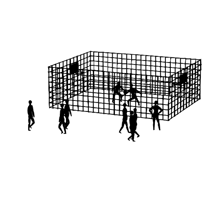Unleashing Creativity Through Structured Play
Core Concepts
Creative limitations set our creativity free by providing structure and rules within which to play, fostering focus, skill development, and enjoyment in the creative process.
Abstract
Engaging in structured drawing games can unlock creativity by imposing limitations that guide decision-making and encourage skill development. The concept of turning creative exercises into games with clear goals and rules helps individuals focus, make progress, and enjoy the process of artistic expression. By setting boundaries and constraints, individuals can explore their creativity within a structured framework, leading to enhanced skills and a sense of accomplishment.
Customize Summary
Rewrite with AI
Generate Citations
Translate Source
To Another Language
Generate MindMap
from source content
Visit Source
ralphammer.com
The Creative Playground - Ralph Ammer
Stats
Drawing exercises help us focus because they limit decisions.
Goal: Draw five objects in your household.
Rules: Complete each drawing in one continuous line without lifting your pen from the paper.
Limiting time allows you to know when you are done.
Focus on a specific skill for personal progress.
Quotes
"They are having fun. They are immersed in a game."
"Creative limitations set our creativity free!"
"Less decisions — more room for play."
Key Insights Distilled From
by at ralphammer.com 12-01-2023
https://ralphammer.com/how-to-get-started/
Deeper Inquiries
How can structured play enhance creativity beyond artistic endeavors?
Structured play can enhance creativity in various ways outside of artistic endeavors. By providing clear goals and rules, structured play helps individuals focus their energy and attention on specific tasks or challenges. This focused approach can lead to increased problem-solving skills, improved decision-making abilities, and enhanced critical thinking. Additionally, structured play encourages experimentation within defined boundaries, allowing individuals to explore different possibilities while still working towards a common goal. This process of exploration and innovation fosters creative thinking and the development of new ideas across a wide range of disciplines.
What potential drawbacks might there be to strictly adhering to rules in creative processes?
While adhering to rules in creative processes can provide structure and guidance, there are potential drawbacks to strict adherence that should be considered. One drawback is the risk of stifling individual expression and limiting innovative thinking by imposing rigid constraints on the creative process. Strictly following rules may also inhibit flexibility and adaptability, preventing individuals from exploring unconventional or out-of-the-box solutions to problems. Furthermore, excessive focus on rules could lead to a lack of spontaneity and originality in creative work, potentially hindering the development of unique ideas or concepts.
How does the concept of structured play apply to problem-solving in other areas outside of art?
The concept of structured play can be applied effectively to problem-solving in various areas outside of art by providing a framework for approaching challenges systematically. Just as drawing exercises involve setting goals, establishing rules, and focusing on specific skills, problem-solving activities benefit from similar structures that guide individuals through the process step by step. By defining clear objectives, creating limitations or constraints, setting time limits for completion, and concentrating on developing particular skills relevant to the task at hand, structured play enables individuals to tackle complex problems with greater efficiency and creativity. This approach promotes collaboration among team members working towards a common goal while encouraging innovation through experimentation within established parameters.
0
